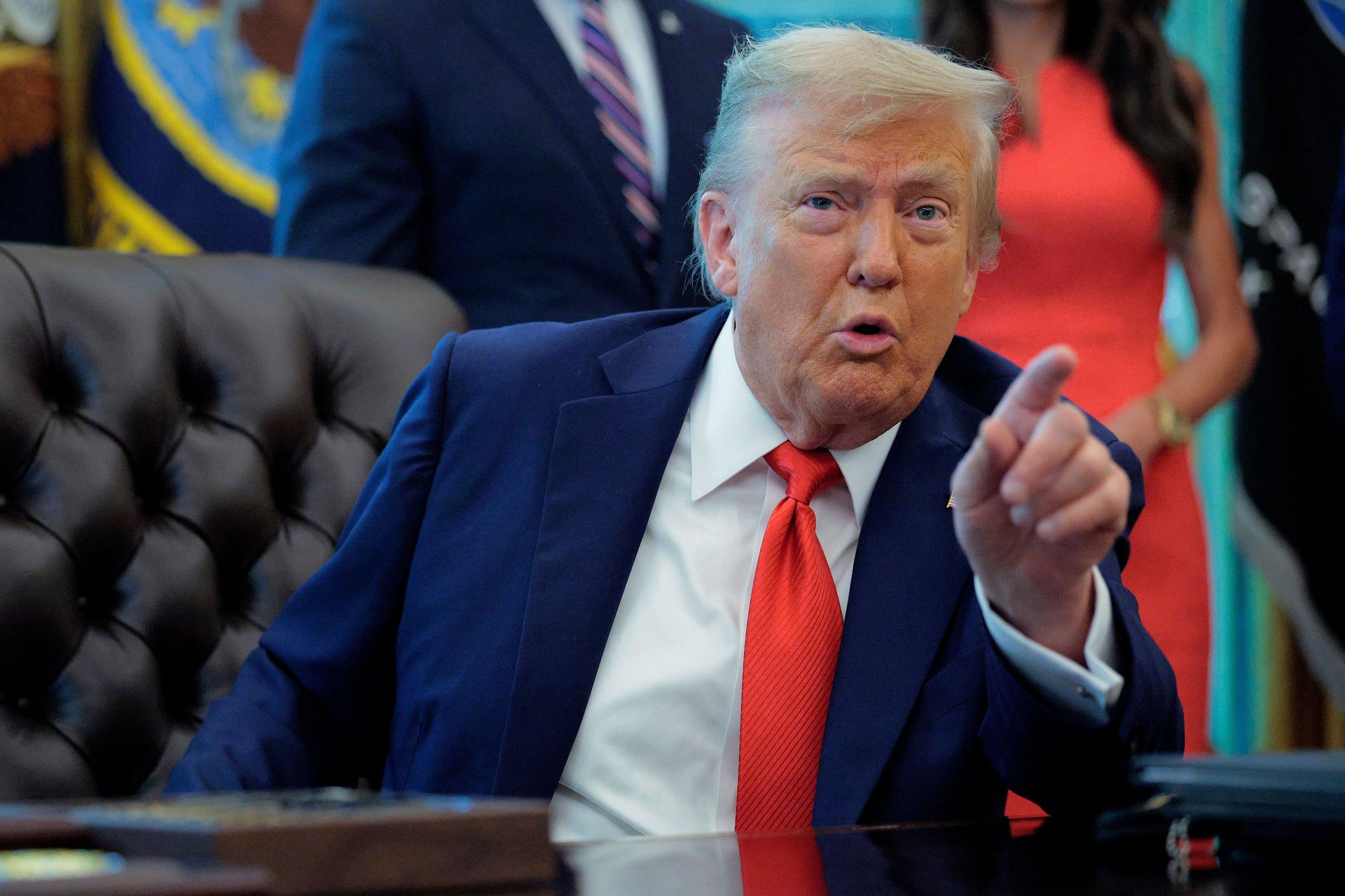Trump can't fire Jerome Powell. So he's going after the rest of the Fed
The president is pursuing changes to the 12-member Federal Open Market Committee that casts votes to decide the cost of borrowing

Chip Somodevilla/Getty Images
President Donald Trump's attempted removal of Federal Reserve Governor Lisa Cook opens a new front in his months-long campaign to bring the central bank to heel on lowering interest rates. Now he's pursuing an overhaul to the Fed committee that casts periodic votes to decide borrowing costs.
Suggested Reading
For now, Cook's attorney said they will sue the Trump administration and challenge her removal. The ensuing legal battle might stretch for weeks. In a new statement through a spokesperson the Fed said they will comply with any court order on Cook's status, and still carry on its responsibilities ensuring stable prices and full employment.
Related Content
At the moment, Trump has two appointees on the Fed's seven-member Board of Governors within the FOMC sympathetic to his view that interest rates should be lower. Earlier this month, Trump named Stephen Miran, a White House economic advisor, to replace Adriana Kugler after she unexpectedly stepped down from the Board of Governors five months ahead of her term's end date. The Senate must still confirm Miran before he can take the post.
Another opening in the Board of Governors would give Trump another chance to install a loyalist or at least someone who's more persuadable on lower interest rates. Four members on the panel delivers a majority to the president to be able to block reappointments to the FOMC early next year, producing a Trump-friendly Fed.
"Beware an assault on independence of Fed through not reappointing Fed Bank Presidents," Gene Sperling, an economist and ex-White House aide to President Joe Biden, wrote on X.
All 12 Federal Reserve Bank District presidents are up for renewal in Feb. 2026, with five of them holding a vote on changing interest rates. Jim Bianco, a financial analyst and president of Bianco Research, argued it could allow Trump an opening to expand his attacks to other Fed Bank presidents who are deemed hesitant or unwilling to support lower interest rates.
"It's a scenario that they could start firing bank presidents, arguably, because they're too hawkish," Bianco said. "Bank presidents are at-will employees to the Federal Reserve Board of Governors. You can fire somebody who's an at-will employee for any reason or no reason."
That would bring the Fed under Trump's sway. Trump has repeatedly assailed Powell over the Fed's pause on interest rate cuts, arguing it's akin to sabotaging the U.S. economy. He weighed firing the Fed chair in June, but he later backed off since it could unleash economic turmoil.
"Especially in this moment, we have been in a really difficult inflationary environment for the past few years," said Sameera Fazili, a former staffer to the Federal Reserve Bank of Atlanta. "This is the exact kind of moment where independence is the most needed."
Fazili said Trump was eroding the Fed's separation from the executive branch with great risk to the economy. "That stable and predictable rule of law has been essential to the smooth functioning of our economy," she said.
The Fed has made its decisions solely based on what's best for the economy and without consideration for the person sitting in the Oval Office. Still, Trump administration officials described the Fed's relationship to the U.S. government as one that can be revised.
"Having the public trust is the only thing that gives it credibility," Treasury Secretary Scott Bessent said at the White House on Monday afternoon, adding "the old ways of doing things are not good enough."
In recent months, the S&P Global and Moody's Analytics ratings agencies warned of downgrading the U.S. AA+ credit rating if the Fed's usual independence was seriously jeopardized. Such a step would add to borrowing costs for the government and make it more expensive to finance U.S. debt.
